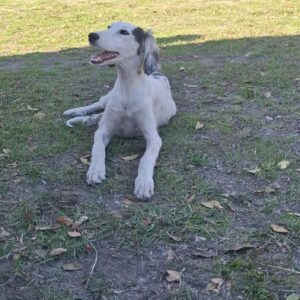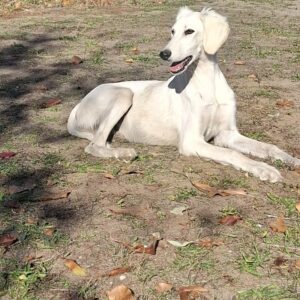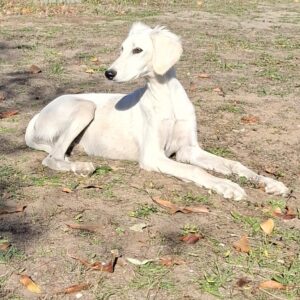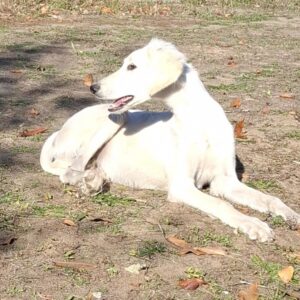The History of Saluki
The ancient Saluki, sometimes called the Gazelle Hound, has been hunting in the deserts of the Maghreb and the Middle East for thousands of years. Today this noble sight hound is still used for hunting, but has also found a place in the agility world and as a beloved and devoted pet. Let’s see the history of Saluki.
The History of Saluki in the Ancient Egypt
The Saluki’s ancestors probably date back to Sumeria and Ancient Egypt. The evidence for this is the art on Egyptian tombs from 2100 BC, and Sumerian carvings from between 7000 and 6000 BC. The ancient ancestors of the Saluki were the Pharaohs’ hunting dogs, used to catch hares and gazelles. The dogs were so revered that they were often mummified. In later centuries, nomadic Muslims kept Salukis for hunting. They referred to the dogs as El Hor, meaning “the noble”, and permitted them to sleep in their tents.
Saluki on the West
The Saluki did not arrive in the West until 1840, when the first Salukis arrived in England. Florence Amherst began breeding them in 1895, but the breed only become popular in the 1920s, when officers who has been fighting World War I in the Middle East brought several Salukis home with them. The craze for Ancient Egypt at that time may also have helped to increase the Saluki’s popularity.
Today’s Saluki
Today, the Saluki is a popular pet, but also excels at agility and other dog sports such as obedience and lure coursing. They are slender, with a long narrow head, a curved tail, and the typical deep chest and long legs of sight hounds. They are fairly large dogs (between 58cm and 71cm at the shoulder). Their fur can be smooth or feathered; the latter have feathery fur on the back of their legs.
Temperament
As for their temperament, adult Salukis tend to be calm and dignified. They are often very docile dogs, but don’t be fooled into thinking of them as lap dogs: the Saluki can be aloof and is not a particularly cuddly dog. They are also very active. The Saluki has a strong instinct to hunt, and will chase small animals and cars, so they need to be kept on a leash to avoid accidents.
They should also have a large yard where they can run about and stretch their legs, with a high fence to prevent them from jumping out – this dog will not be happy in an apartment. Daily walks are a must. Once your Saluki has had his daily exercise, he will happily sit on your sofa or on a plush cushion to relax – Salukis are bony dogs, so are much comfier on cushions or similar soft surfaces.
Socialization and Training
Salukis are sensitive dogs and need to be treated accordingly. They are intelligent and tend to think for themselves, so train your Saluki using techniques such as positive reinforcement training. Be sure to socialise them from an early age, otherwise they may become timid or shy. Don’t leave any food out, because your Saluki may steal it. Although they are docile, they are not the best pets for small children. They are very active dogs, and small children may accidentally hurt the slender dogs’ thin skin. Older children and adults will find that the Saluki is an ideal companion animal. The Saluki normally gets on well with other dogs.
Health
Salukis are remarkably healthy animals. If you buy your dog from a responsible breeder, your dog is likely to live a long and healthy life. Average life expectancy is around 12 to 14 years. Hip dysplasia can occur but is quite rare. Common causes of death are cancer and heart problems, but generally Salukis die peacefully from old age. Be aware that Salukis occasionally have skin problems such as alopecia and dermatitis. If you have any concerns about your dog’s health, be sure to consult your vet for advice.





























